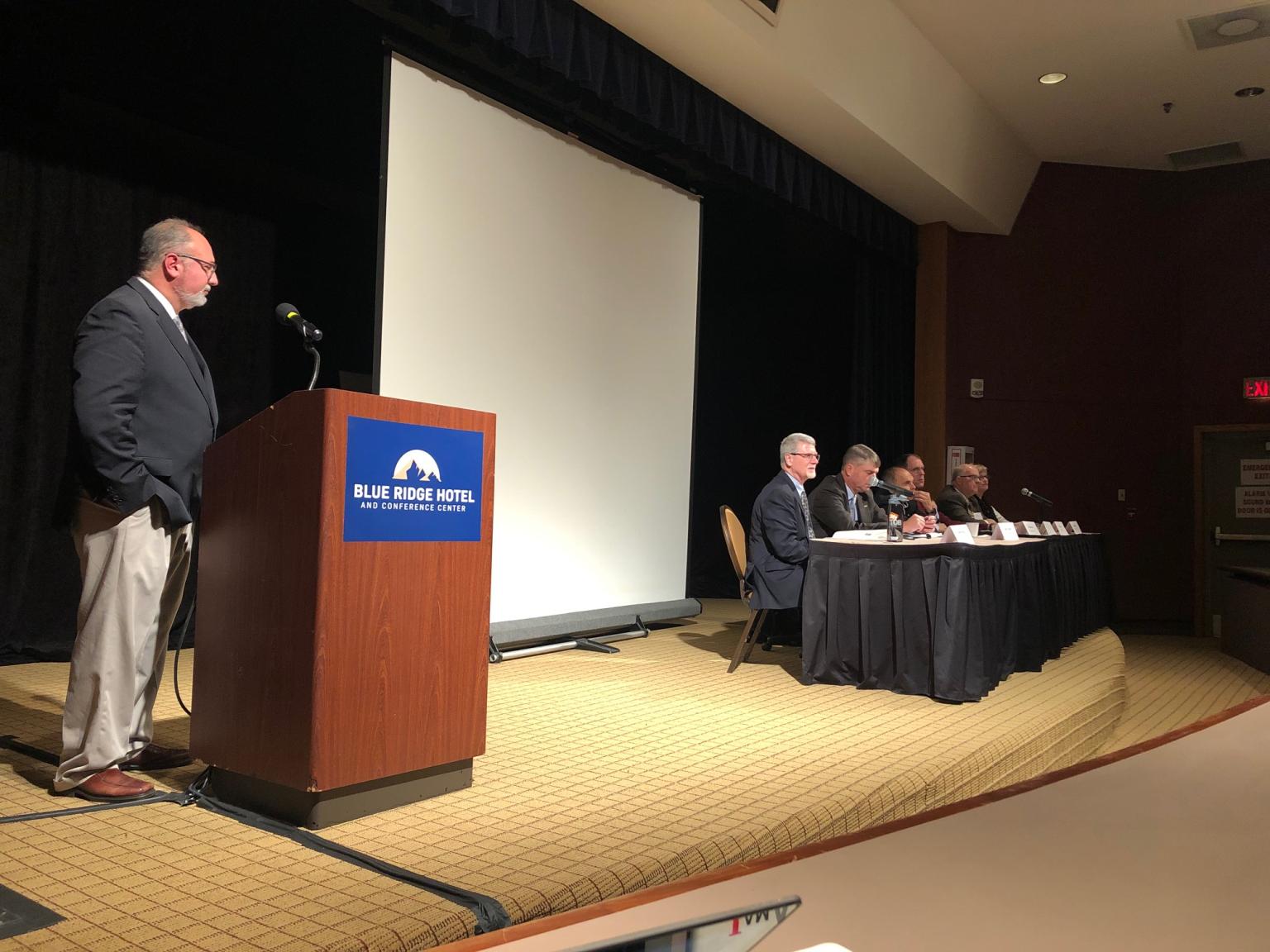
ACE is a joint venture of the American Institute of Architects, Associated General Contractors, and the American Council of Engineering Companies of Virginia, to educate and promote best practices of the design and construction industry. In 2018, its inaugural year, ACE held three collaborative forums that connected the design and construction professions with those that hire them. What resulted was an improved understanding of what makes projects successful from the perspective of all stakeholders, an intimate forum for business development, and an opportunity to learn about future projects.
On November 13th, ACE had its fourth and final Joint Owner Forum of the year in Roanoke. This year, we have engaged various local governments from around the Commonwealth. This session hosted stakeholders and decision-makers from the City of Roanoke, Roanoke County, Radford City Schools, and the Town of Blacksburg.
The panel consisted of the following participants:
Nell Boyle, LEED AP BD+C – Sustainability/Outreach Coordinator [City of Roanoke]
Randy Formica, PE – Director of Engineering and GIS [Town of Blacksburg]
Robert Graham – Superintendent [Radford City Schools]
Terry Kemp – Architect I [City of Roanoke]
Tarek Moneir – Acting Director of Development Services [Roanoke County]
Morgan Yates, CBO – Building Commissioner [Roanoke County]
Below is a snapshot of the key points discussed:
Upcoming Projects
- Utility, water/wastewater and infrastructure projects in the Town of Blacksburg
- Radford City Schools has aging buildings and facilities, estimated $34-$36M needed for all capital improvements for schools
- Roanoke County is focused on transportation (419 corridor), stormwater and stream restorations. The County recently installed a new permitting system to facilitate the design and construction process
- The City of Roanoke will have a bridge renovation, two new fire stations upcoming, bus transfer station, and begin the planning of an “Innovation Corridor” to connect to Virginia Tech facilities
Procurement Methods
- Annual services contracts are utilized frequently in this region by municipalities
- The PPEA process has been used for a police department, library, safety center, parking garage, and school projects. It appears that the Town of Blacksburg and Roanoke County have used this project delivery method most frequently
- CM-at-Risk has not been used by any entity yet
Energy Efficiency and Sustainability
- The City of Roanoke has made the most progress in terms of documentation and benchmarking of sustainability. By the end of 2024, its goal is to reduce Greenhouse Gas (GHG) emissions by 12.5% for municipality buildings and 10% for other community structures. These are new goals as the City has continually been decreasing GHG emissions over the recent years. The City tracks energy usage in all facilities.
- The City of Roanoke’s standard is to design and build to LEED Certification
- Roanoke City Schools will be engaging in a large ESCO contract soon
- Radford City Schools is looking for opportunities to save money with utilities. Honeywell recently did a study to show building energy inefficiencies which indicated that the City spends about $50k per month in utilities.
- The Town of Blacksburg has a Sustainability Manager. All new buildings are expected to be designed to LEED Silver
Regional Issues
- Transportation: Valley Metro Service – extending service between the City and County
- Balancing bicycle/pedestrian/automobile networks
- Affordable housing and Senior living units
- Urging of the General Assembly to have funding reach rural Virginia
- 40%-50% increase in wages to keep a good labor force in construction; increasing minimum wage may compound this issue
- It is difficult to project escalation in capital programs budgeting. Some projects have been bid two to three times because of the increase in construction costs
Best Practices for Success
- Responsiveness
- Demonstrating control of the schedule
- Remember that you are an extension of our staff
- Come to an interview and show that you have put some thought into the design challenge
- Prove your ability to allow collaboration and engagement, especially with the community
- Call our locality the RIGHT name
- When the project is complete – come back and check on it
- Accountability, Communications, and Trust (ACT)
- Get to the point in your RFP proposal (BLUF – Bottom Line Up Front)
- Customer service and develop effective ways of communication
- Ask for a debrief if you don’t get the project
- It can be helpful if the A/E is able to share projected energy savings from preliminary energy models during the RFP and interview stage.
Our Joint Owner Forum series will continue in 2020 so please stay tuned!
